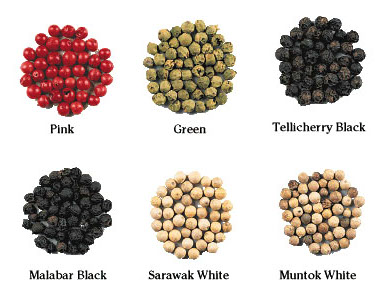
| "New Spelling" of Dutch |
| |
| |
| |
 |
Pepper was costly for centuries and highly profitable during the rise of the Netherlands. Indeed, the modern country was built on the spice market. The Netherlands was an enormous ocean-going power. Its business arm, the East Indies Company, presided over a spice trade that was by far the largest commercial operation to date.
It was a good time for a gentleman to invest his funds in this business. A single barrel could make him wealthy, and ships were sailing by the fleet. It was the Golden Age, and the nation got rich.
The word peperduur is probably a cognate of the medieval French expression from which derives the modern "cher comme poivre." French cuisine promoted the use of pepper as a superior ingredient, though the commodity had been valuable since the time of the Roman Empire. Native to a region of India, the pepper that Europe demanded for cuisine and medicine was available only in meager supply relative to demand — ergo expensive.
The value of pepper in European markets attracted all the great shipping powers, from the aforementioned Romans to the great Italian post-empire cities to the Portuguese (whose Vasco da Gama learned how to sail around Africa) to the English to the Dutch — who competed and battled for primacy with those Portuguese fleets.
The Dutch East-Indies Company (the Vereenigde Oostindische Compagnie, or V.O.C.) was a military-commercial organization that made a tiny country the principal global maritime power and Amsterdam the richest city in Europe. Peppercorn was the commodity at the center of its business model.